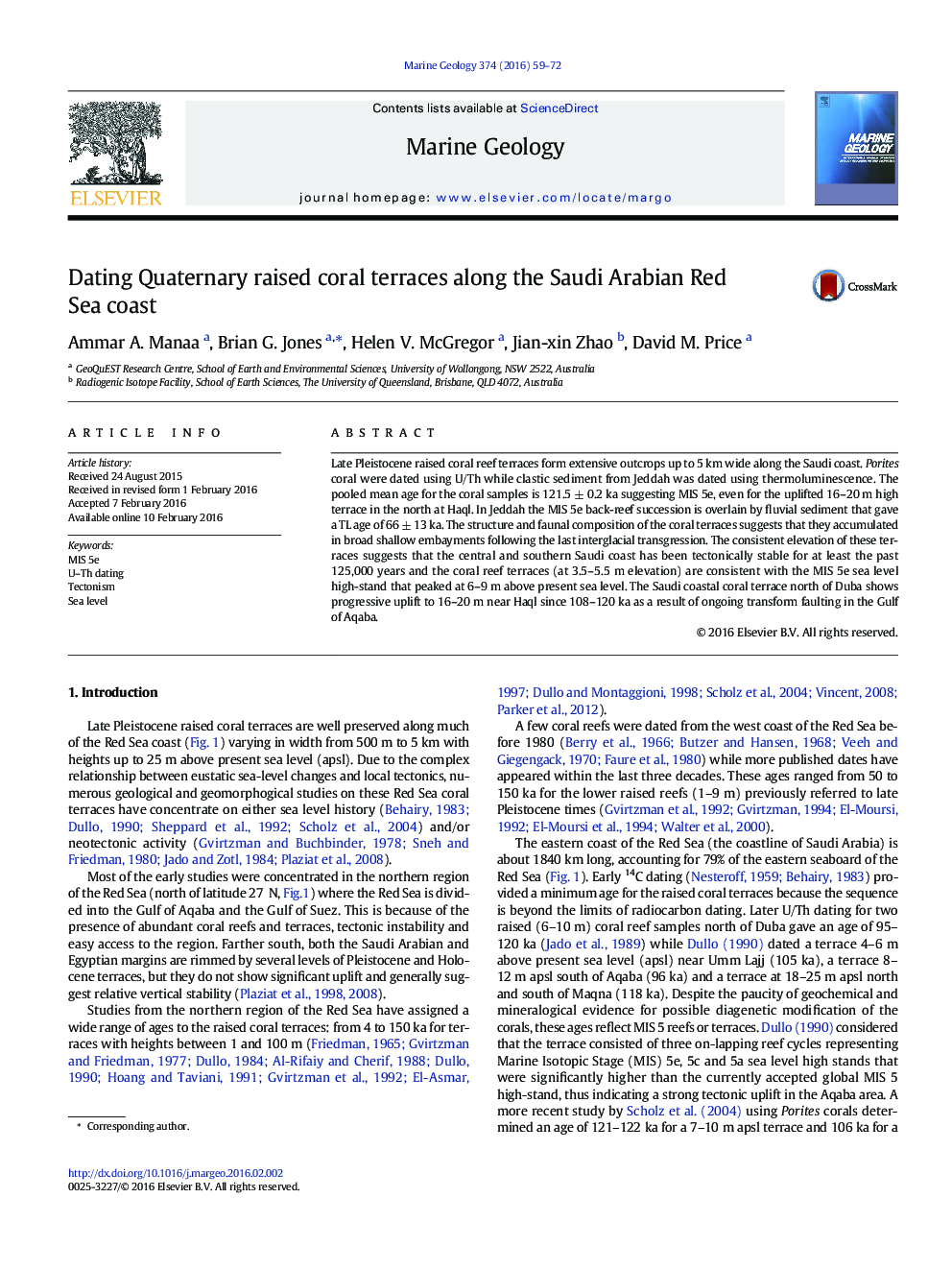| Article ID | Journal | Published Year | Pages | File Type |
|---|---|---|---|---|
| 4718130 | Marine Geology | 2016 | 14 Pages |
•Major coral terrace growth along Saudi Red Sea coast at 122–119 ka during MIS 5e•Coral terrace represents MIS 5e sea level highstand at least 6 m apsl at 120 ka.•Uniform terrace height shows tectonic stability on central to southern Saudi coast.•Coast north of Duba uplifted to 25 m apsl by faulting in last 100 ka.
Late Pleistocene raised coral reef terraces form extensive outcrops up to 5 km wide along the Saudi coast. Porites coral were dated using U/Th while clastic sediment from Jeddah was dated using thermoluminescence. The pooled mean age for the coral samples is 121.5 ± 0.2 ka suggesting MIS 5e, even for the uplifted 16–20 m high terrace in the north at Haql. In Jeddah the MIS 5e back-reef succession is overlain by fluvial sediment that gave a TL age of 66 ± 13 ka. The structure and faunal composition of the coral terraces suggests that they accumulated in broad shallow embayments following the last interglacial transgression. The consistent elevation of these terraces suggests that the central and southern Saudi coast has been tectonically stable for at least the past 125,000 years and the coral reef terraces (at 3.5–5.5 m elevation) are consistent with the MIS 5e sea level high-stand that peaked at 6–9 m above present sea level. The Saudi coastal coral terrace north of Duba shows progressive uplift to 16–20 m near Haql since 108–120 ka as a result of ongoing transform faulting in the Gulf of Aqaba.
